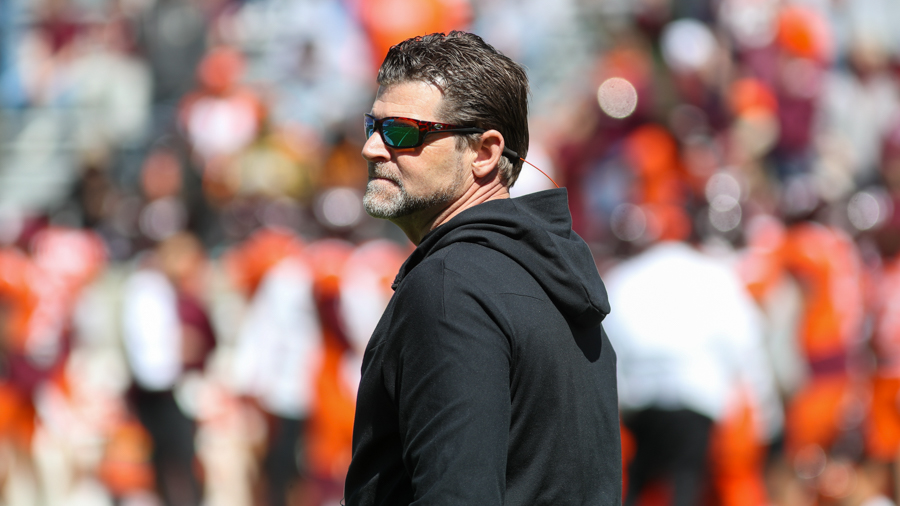In case you haven't heard, Brent Pry and his staff have been 'crooting.
In July, the Hokies picked up a pair of in-state prospects in Micah Matthews and Matthew Outen. Both are four-star recruits, giving Tech three 4-stars in their 2025 class — all from Virginia. All told, Tech has 11 commits from the state of Virginia, in addition to 18 from the previous two cycles.
Frank Beamer built Virginia Tech football on the back of in-state recruiting. Justin Fuente — notably — did not. The deprioritization of Virginia prospects under Fuente was one of the most contentious aspects of his tenure, with the lowlight coming in 2020 when he signed a single in-state recruit.
Pry seems well on his way to reestablishing those lost relationships in the Commonwealth. But is the hype real? And more so, what are the implications for Tech focusing more of their recruiting efforts in-state?
In studying the data, I realized the conversation about Virginia high school recruiting — and the degree to which it declined under the previous regime — was more nuanced than it seems.
That's because Virginia is a state like few others. Let's talk about it.
Location Matters
When a new head coach is hired, it is standard practice to talk about "recruiting the footprint." Every coach does it. It's like a politician saying "God bless the people of [insert state here]" — a standard rite of passage to show that you care about the constituents for whom you work.
It matters, too, because geography is important in recruiting. Thanks to some great work by Bud Davis, we know that about 30% of recruiting boils down to location. To recruit the best players, it helps to be near them.
📊What Factors Predict Recruiting Success▫️Part 1: Talent Availability▫️Roughly 30% of recruiting can be explained by Location▫️200 mi found to be most-predictive distance for Top 300 players▫️No surprise Bama/UGA have recruiting success▫️Deviations discussed in Part 2 pic.twitter.com/XqK2pWjlrS— Bud Davis (@JBudDavis) December 2, 2022
Now, how do you determine talent in a region?
This particular graph looks at the number of top-300 high school recruits within a 200-mile radius of each school. For Tech, that would include most of Virginia, as well as recruiting hubs like Greensboro, Raleigh-Durham, and Charlotte. The Hokies come in slightly-below-average in terms of talent availability among Power Four schools. (Though this chart does not include the DMV or Hampton Roads, which probably undersells Virginia Tech's recruiting potential.)
I chose instead to look instead at the hometowns of NFL Draft picks. The reasons were twofold: (1) it was the easiest way for me to tabulate data; and (2) if you want to consistently win 9+ games at the Power Four level, you need to have NFL players on your team. As we shall see, being a highly-touted prospect does not always equate to being a good football player.
In the case of Virginia, it really doesn't translate.
Studs and Duds
A while back, a friend brought to my attention the conspicuous lack of Virginians getting drafted into the NFL. Naturally, I decided to do some further research.
To continue reading Get Fully Dipped and Join The Key Players Club »
- Exclusive Content
- Interact in community forums
- Post and view comments
- Advanced site features
- No pesky display ads, only offers from TKP sponsors
- Members Only Forum

